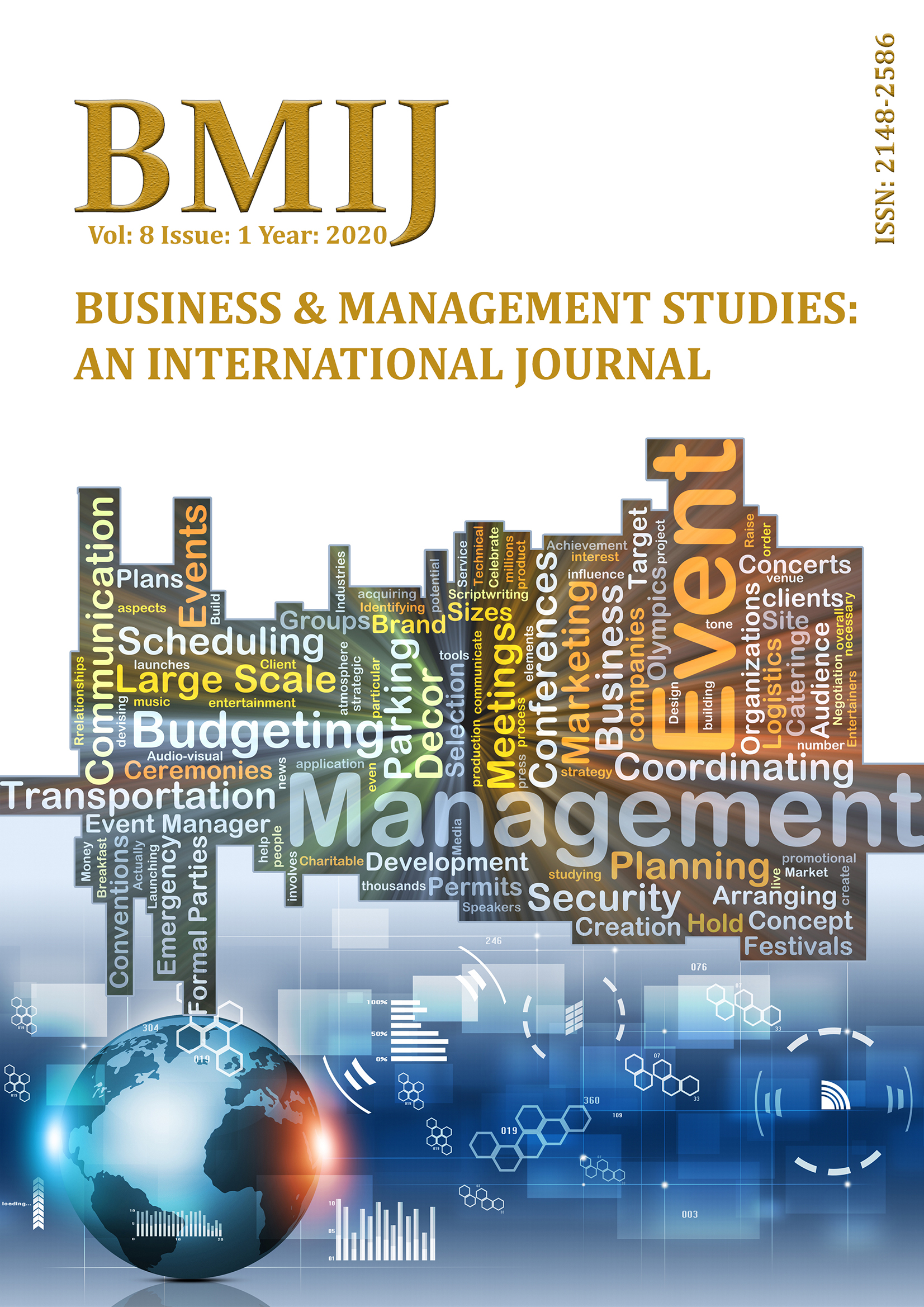
Published 2020-03-25
Keywords
- Risk Assessment, AHP, RADM, Work Safety
- Risk Değerlendirme, AHP, RADM, İş Güvenliği
How to Cite
Abstract
The shipbuilding sector has significant risks in terms of occupational health and safety due to its complex structure, working at height and the use of hazardous chemicals. Since the risk analysis methods in our country are generally based on expert opinions, different results may arise on the same subject. Therefore, a realistic and consistent risk analysis method is needed for shipyards. In this study, a multi - criteria decision making method has been established by using shipyards in occupational health and safety risk analysis. Analytical Hierarchy Process (AHP) coefficients were inclueded in the L-Type (5x5) Risk Assessment Matrix (RADM. As a result of this study, a realistic method has been developed for the risk analysis of shipyards which will reveal the risk of each existing danger and the overall risk level. Thus, sorting and ranking between shipyards was made possible.
Downloads
References
- Accola, W.L. (1994), “Assessing Risk And Uncertainty In New Technology Investments”, Accounting Horizons, 8 (3), 19-35.
- Aminbakhsh, S., M. Gündüz ve R. Sönmez. (2013), “Safety Risk Assessment Using Analytic Hierarchy Process (AHP) During Planning And Budgeting Of Construction Projects”, Journal of Safety Research, 46, 99-105.
- Barlas, B. (2012), "Shipyard fatalities in Turkey", Safety Science, 50, 1247-1252.
- Basuki, M., Djauhar, M., Nugroho, S., Dinariyana, A.A.B., (2014), “Probabilistic risk assessment of the shipyard Industry using the Bayesıan Method”, International Journal of Technology. 1, 88‐97.
- Burgazoğlu, H. (2015), “Macbeth”, B. F. Yıldırım, E. Önder (Ed.), Çok Kriterli Karar Verme Yöntemleri, Bursa, Dora Yayınları.
- Ceylan, H. and V.S. Başhelvacı (2011), “Risk Analysis With Risk Assessment Matrix Method: An Application”, International Journal of Engineering Research and Development, 3, 25- 33.
- Chen S.J. and C.L. Hwang (1992), “Fuzzy Multiple Attribute Decision Making Methods. In: Fuzzy Multiple Attribute Decision Making”, Lecture Notes in Economics and Mathematical Systems, 375, Springer, Berlin, Heidelberg.
- Çeliktaş, B. and N. Ünlü (2018), “Creating An Exemplary Risk Assesment Report By Using Risk Assessment Decision Matrix Method”, International Journal of Social Science, 65, 483-504.
- Çinicioğlu, E. N., Atalay, M., Yorulmaz, H. (2013), “Trafik Kazaları Analizi için Bayes Ağları Modeli”, Bilişim Teknolojileri Dergisi, 6(2), 41-52.
- Department of Defence (DoD), (2000), Standard Practice for System Safety, MILSTD-882D.
- Erdoğan, A., (2015), “Hata Ağacı Analizi, Literatür Araştırması ve Orta Ölçekli Bir İşletmede Uygulama”, ÇSGB Çalışma Dünyası Dergisi, 3(1), 106-122.
- Eroğlu, E. ve F. Lorcu (2007), “Veri Zarflama Analitik Hi¬yerarşi Prosesi (VZAHP) İle Sayısal Karar Verme”, İstanbul Üniversitesi İşletme Fakültesi İşletme Der¬gisi, 36 (2), 30-53.
- Europian Comission Statistics Institute (2018), https://ec.europa.eu/eurostat/tgm/table.do?tab=table&plugin=1&language=en&pcode=sdg_08_60. Erişim Tarihi: Ağustos, 2018.
- Güler, A. (2015), “Gemi Bakım Onarım Sektöründe Kimyasal Risk Değerlendirmesi”, Yüksek Lisans Tezi, Gazi Üniversitesi Fen Bilimleri Enstitüsü, Ankara.
- Güner, H. (2005), “Bulanık AHP ve Bir İşletme İçin Tedarikçi Seçimi Problemine Uygulaması”, Yayınlanmamış Yüksek Lisans Tezi, Pamukkale Üniversitesi - Fen Bilimleri Enstitüsü, Denizli.
- Güner, R. (2013), “Tersane Sektöründe Meydana Gelen İş Sağlığı ve Güvenliği Değişimi (2003-2013)”, Mühendis ve Makine, 54 (642), 24-28.
- Hafeez K., N. Malak and Y. Zhang (2007), “Outsourcing Non-Core Assets and Competences of A Firm Using Analytic Hierarchy Process”, Computers and Operations Research, 34 (12): 3592-3608.
- Koltan, Orhon, ve ark. (2010), “Risk Değerlendirmede Kullanılan L Tipi Karar Matrisi Yönteminin İşçi Sağlığı Uygunluğunun Değerlendirilmesi”, Türk Tabipler Birliği Mesleki Sağlık ve Güvenlik Dergisi, 4, 38- 43
- Lee, E., Park, Y., Shin, J.G., (2009), “Large Engineering Project Risk Management using a Bayesian Belief Network”, Expert Systems with Application, 36(3), 5880-5887.
- Millet, I. and Wedley, W.C. (2002), “Modelling Risk And Uncertanity With The Analytic Hieararchy Process”, Journal of Multi-Criteria Decision Analysis, 11, 97-107.
- Monfortea, P. M., Oliveirab, U. R., Rochaa, H. M., (2015), “Failure Mapping Process: An Applied Study In A Shypyard Facility”, Brazilian Journal of Operations & Production Management, 12, 124-134.
- Mustafa, M.A. and J.F. Al-Bahar (1991), “Project Risk Assessment Using The Analytic Hierarchy Process”, IEEE Transactions on Engineering Management, 38 (1), 46-52.
- Myers, J.H. and M.I. Alpert (1968), “Determinant Buying Attitudes: Meaning and Measurement”, Journal of Marketing, 32 (July), 13-20.
- Okumuş, D., Barlas, B., (2016), “Gemi İnşaatı Sektöründe 5x5 Analiz Matrisi ve Fine-Kinney Yöntemlerinin Uygulamalı Bir Karşılaştırması”, Gemi ve Deniz Teknolojisi Dergisi, 22(204-205), 95-106.
- Oturakçı, M., Dağsuyu, C., (2017), “Risk Değerlendirmesinde Bulanık Fine‐Kinney Yöntemi ve Uygulaması”, Karaelmas İş Sağlığı ve Güvenliği Dergisi, 1(1), 17-25.
- Özkılıç, Ö. (2005), “İş Sağlığı ve Güvenliği, Yönetim Sistemleri ve Risk Değerlendirme Metodolojileri”, Türkiye İşveren Sendikaları Konfederasyonu (TİSK), Ankara, 219.
- Remolina, F. (2017), “Shipyard Project Management”, Project Managers, 1st Ed.
- Saaty, T.L. (1980), The Analytic Hierarchy Process, New York: Mc Graw Hill.
- Sanchez, Pérez ve ark. (2014), “The Shipbuilding and Naval Repair Sector in the Atlantic Area”, Journal of Maritime Research, 11 (1), 99-107.
- Sarul L.S. and Ö. Eren (2016), “The comparison of MCDM Methods Including AHP, TOPSIS and MAUT with an Application on Gender Inequality Index”, European Journal of Interdisciplinary Studies, 4(2), 181-194.
- Senger, Ö. ve Ö. Karadağ Albayrak (2016), “Gri İlişki Analizi Yöntemi İle Personel Değerlendirme Üzerine Bir Çalışma”, Uluslararası İktisadi ve İdari İncelemeler Dergisi, 17, 235-258.
- Stoneburner, G., A.Y. Goguen, and A. Feringa (2002), Sp 800-30, Risk Management Guide for Information Technology Systems
- Sum, R. (2015), “Risk Prioritisation Using The Analytic Hierarchy Process”, Proceedings of the and Innovation and Analytics Conference & Exhibition.
- T.C. Ekonomi Bakanlığı (2016), Gemi İnşa Sektörü, https://ticaret.gov.tr/data/5b87000813b8761450e18d7b/Gemi_%C4%B0nsa_Sanayi.pdf, Erişim Tarihi : 28 Eylül 2018.
- Watson, H. A. (1961), “Lunch Control Safety Study”, Section VII Vol. 1, Bell Labs., Murray Hill, NJ, 1961.
- Zahedi, F. (1986), “The Analytic Hierarchy Process- A Survey of The Method And Its Applacitions”, Interfaces, 16 (4).


